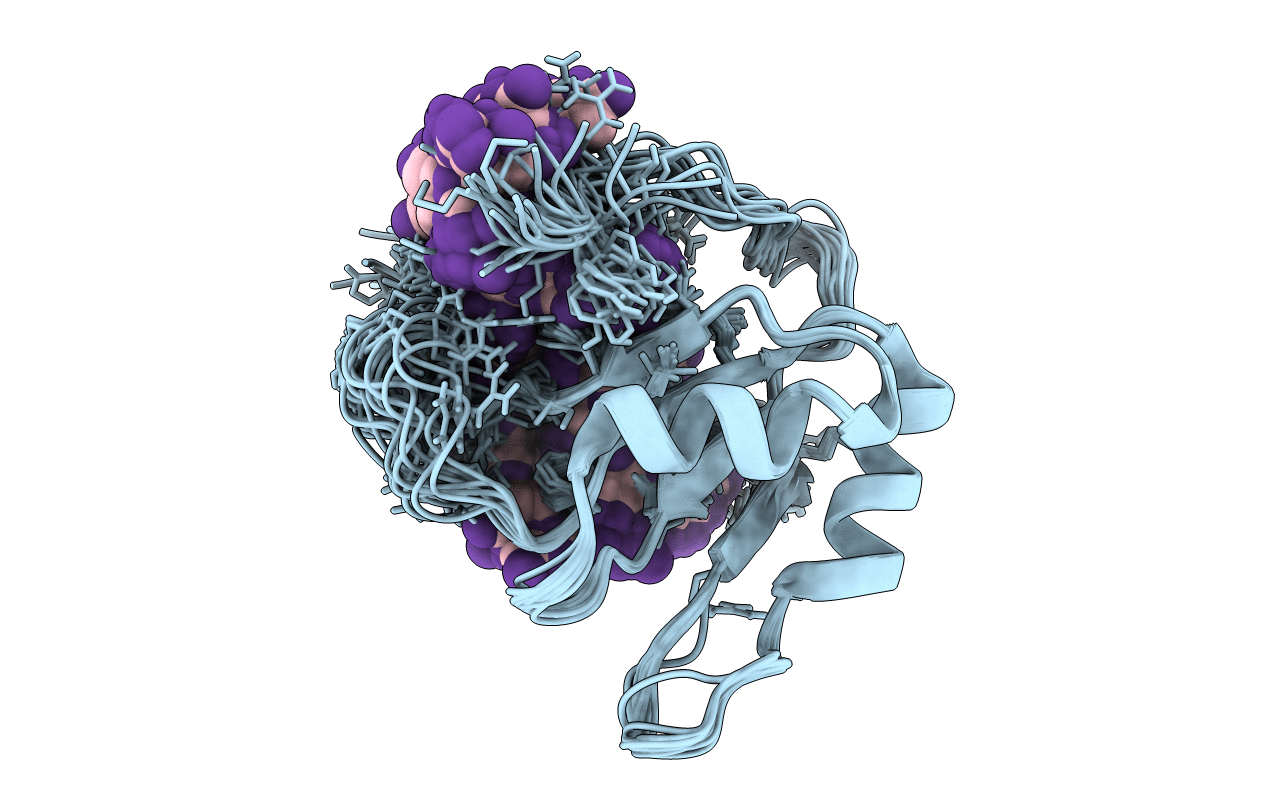
Deposition Date
2011-06-15
Release Date
2011-11-23
Last Version Date
2024-05-08
Entry Detail
PDB ID:
2LEC
Keywords:
Title:
Solution structure of human SRSF2 (SC35) RRM in complex with 5'-UGGAGU-3'
Biological Source:
Source Organism:
Homo sapiens (Taxon ID: 9606)
Synthetic construct (Taxon ID: 32630)
Synthetic construct (Taxon ID: 32630)
Host Organism:
Method Details:
Experimental Method:
Conformers Calculated:
50
Conformers Submitted:
20
Selection Criteria:
structures with the lowest energy


